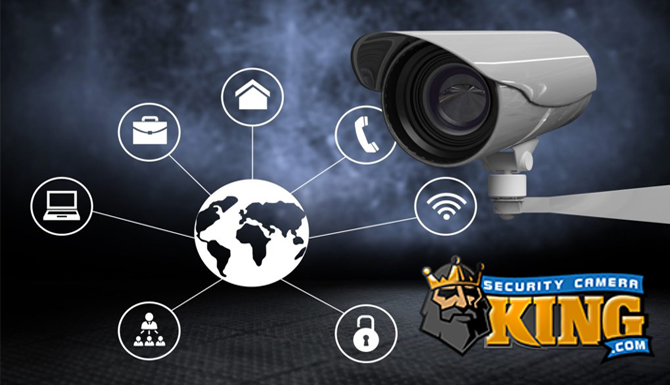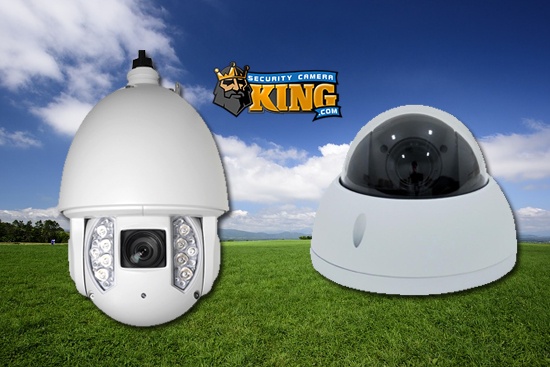Ai in CCTV by SCK
Security Camera King offers cutting-edge security technologies, including AI in CCTV cameras and NVRs. How does AI benefit CCTV? What exactly is AI?
When it comes to CCTV, it might be a bit easier to answer more specifically the question ‘What is artificial intelligence”? This is because we use this term to describe a set of features that fall under this category of AI. As a more general description, however, AI or Artificial intelligence is a single or set of programmed computer software(s) that have the ability to adapt and/or learn to perform its dedicated tasks more effectively over time. More specifically, these would be the kind of tasks that we might normally only trust to a human intelligence capable of making inferences and cross-referencing to come to conclusions.
With Artificial intelligence features now present in our highest-end NVRs, and some DVRs, your ability to monitor your location with peace of mind has increased to a degree never thought possible. Again, AI is an umbrella term that covers a lot of ground, for us we’ll be answering ‘what is artificial intelligence in CCTV” by going over many of the newly available features within these AI systems.
In many situations, you’ll need both an AI-capable IP camera and an AI-capable NVR to take full advantage of some of these features. While some AI NVRs are able to use some AI features son standard cameras, this usually will reduce the available AI processing power on the recorder, reducing how many cameras can use AI, and which features can be used. Always call a Sales Pro for answers to questions on compatibility, products, or features.
With that said, let’s take a look at some of the amazing features found in our AI systems today!
Facial Capture and Recognition –
Facial Capture cameras working with a recorder using facial recognition can provide amazing results!
A Facial Capture camera uses advanced dAI algorithms to know when it sees a human face in the image. The camera communicates with the NVr and first triggers a “facial capture.’ Our recorders also have the ability to catalog different search data found during these facial captures. For example, when an AI camera Captures a Face, it can also add in other metadata such as Gender, Hats, Glasses, Beards, etc. This data is not used to enhance the unit’s ability to recognize faces so much as it is there for the purpose of adding additional search tags and therefore enhancing the user’s ability to narrow down AI search results.
You can at this time add rules or triggers on how the recorder will subsequently react to captures of that exact same face.
One of the most interesting features of this new AI feature is location tracking. If you have a Facial recognition-NVR system that features multiple Facial Capture cameras, you can actually track the movement of any one person throughout the location. Using the AI search page in the NVR, you can choose a registered face and have the system populate all recording data of every time that face was captured, where it was captured, and in chronological order. This will show a person’s path from the first facial capture to the last. Some other triggers include PTZ actions, general alarm out signaling, and of course triggering of one or more channels to record.
Advanced Perimeter Protection
Now that we’ve discussed Facial capture and recognition. Let’s move on to the other feature on our list today: Advanced Perimeter Detection. APD Can be achieved in one of two ways. Firstly you can either set the system to detect Human Bodies or Vehicles anywhere in the scene- and log metadata about their movements and positions. Another way is the ability to set trigger rules to a given scene in a similar manner to those you might find in our IVS features. Much like IVS a user can draw perimeters, and insert tripwires. What makes the AI version of this so unique, is that it actually has the ability to discern what kinds of objects are crossing the Perimeter rules and behave accordingly. For example, if you are filming a parking lot that has a lot of vehicle traffic you aren’t concerned with- but are concerned with unauthorized personnel trespassing on foot- the perimeter rules can be set to ignore objects the AI sees as “cars” and react to objects it sees as “people”.
You can then have the camera in question auto-track if it is a PTZ, trigger itself and/or other cameras to record, send an alarm out signal, and alert the user via push notifications of a wire or perimeter trip. Using AI with IVS for perimeter protection adds a dual-layer of false-alert mitigation. Targets have to cross the rules AND be read as a human or vehicle to count as an event trigger.
As amazing as this new tech is there are some important things to remember regarding what it can, and cannot do. Keep in mind that in order to take the most advantage of any of these setups- you will need to have an AI-capable NVR and an AI-capable camera paired together. It is possible for some of the systems to process all the AI on the NVR end, and be used with a non-AI camera- however, there are limitations to this. Mostly these limits apply to the number of active cameras able to use AI features.
Thanks for joining us today as we answered the question “What is Artificial intelligence in CCTV?” For any questions on product compatibility, availability or any other information don’t hesitate to give our Sales Pro’s a call at 561-288-5258 . Don’t forget to subscribe to our YouTube Channel for more Tutorials and CCTV info. Until Next time, Stay Safe!
Related: What’s the difference between DVR and NVR?
Related: What’s the difference between H264 and H265?
Related: IP PTZ Security Cameras – All There is to Know
Related: Resolution, and why does it matter?
Related: What are active deterrence cameras?
Find Us On: Facebook | Twitter | YouTube












